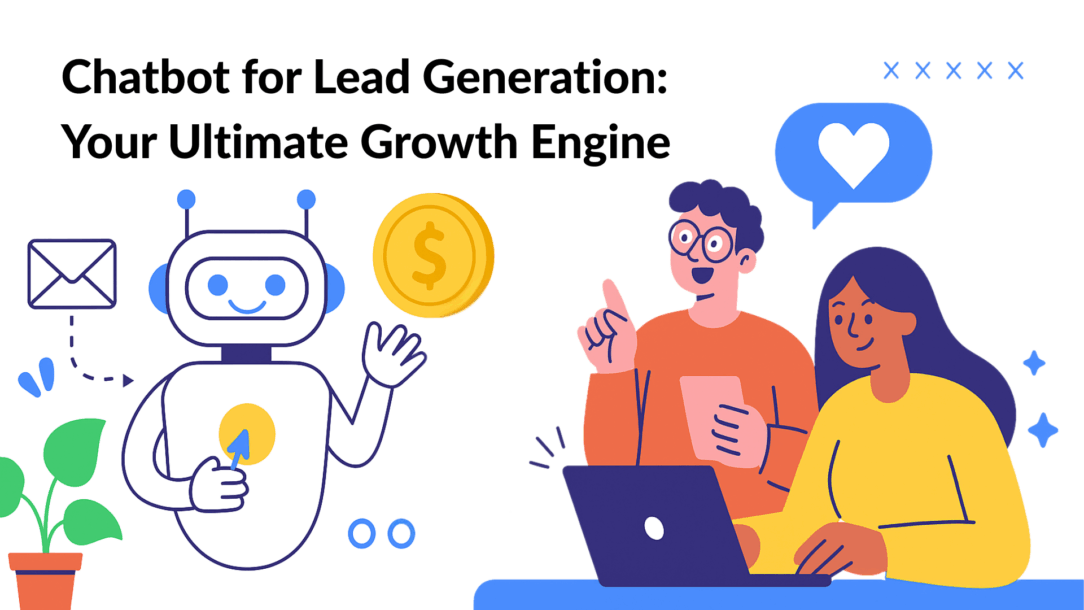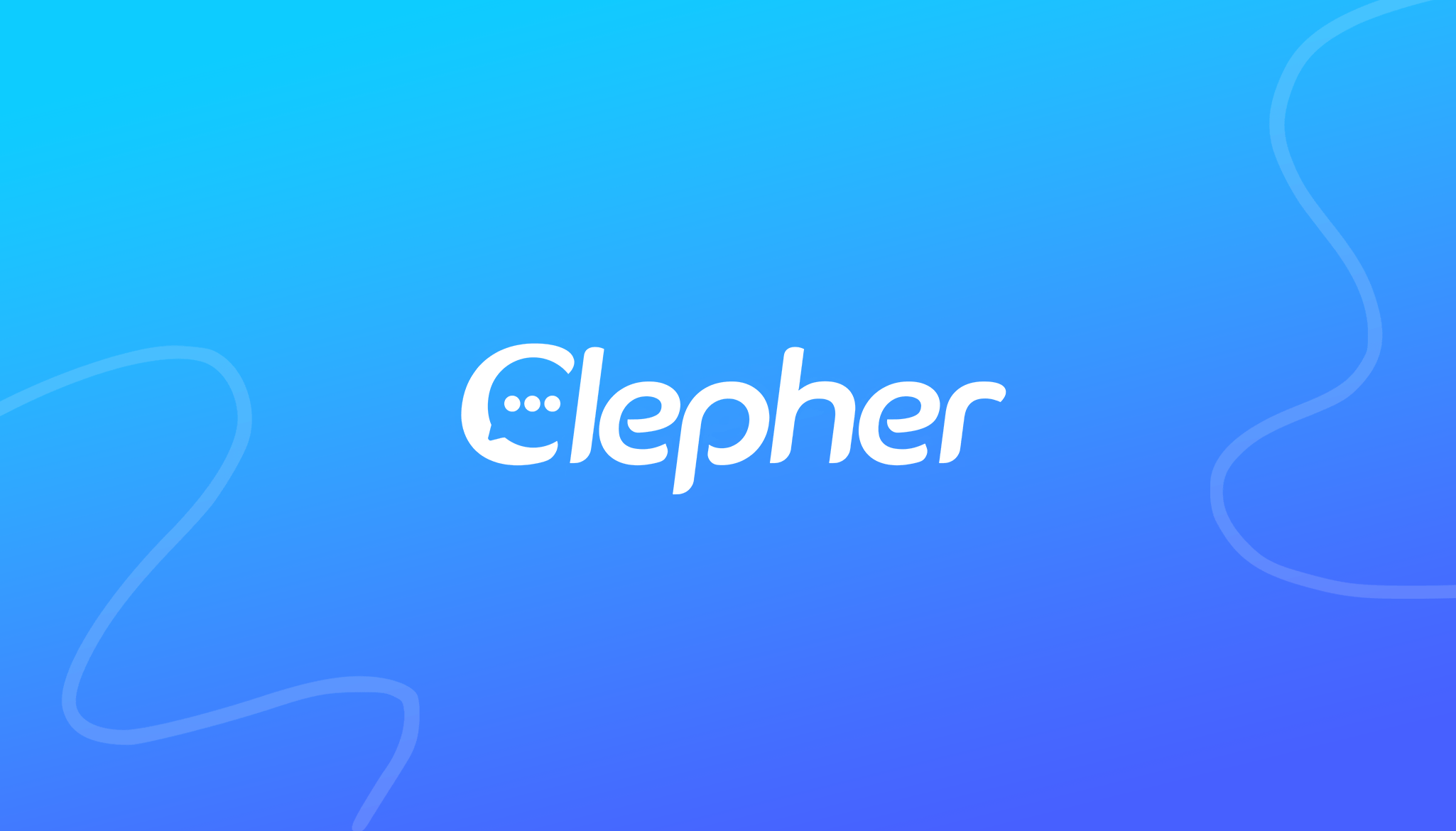A chatbot for lead generation is your secret weapon for turning anonymous website visitors into qualified, sales-ready leads. It’s an automated conversational tool that works 24/7 to engage people, ask the right questions, and capture their contact info. Think of it as replacing your old, static contact forms with a dynamic, interactive conversation that starts the instant someone shows interest.
Your New 24/7 Sales MVP
Imagine your best salesperson. Now, imagine they could be on your website around the clock, ready to greet every single visitor with a helpful, personalized message. They’d never get tired, never miss a conversation, and would perfectly qualify every prospect before handing them off to your team.
That’s the power of a chatbot for lead generation.
This isn’t just about sticking a chat widget on your site. It’s a fundamental shift in how you capture and qualify leads. Traditional methods like “Contact Us” forms are full of friction. A visitor has to fill out a bunch of fields, hit submit, and then… wait. In that time, their interest plummets, or worse, a competitor swoops in.
A chatbot completely eliminates that waiting game, transforming a passive experience into an active, engaging dialogue.
From Static Forms To Dynamic Conversations
Let’s be honest: a standard lead form is a one-way street. The visitor gives you their info and hopes for a response. A chatbot flips that script entirely, turning it into a two-way conversation that provides immediate value while gathering crucial data.
Here’s the practical difference:
- Instant Engagement: Instead of waiting for an email, a visitor gets their questions answered on the spot. This builds trust and momentum from the very first interaction.
- Guided Qualification: Just like a real sales development rep, the chatbot can ask a series of smart, conditional questions to understand a visitor’s needs, budget, and timeline.
- Seamless Handoff: Once a lead is qualified, the bot can book a meeting directly on a salesperson’s calendar or alert your team for a live takeover. All within seconds.
This visual perfectly captures how chatbots stack up against old-school methods in key performance areas.
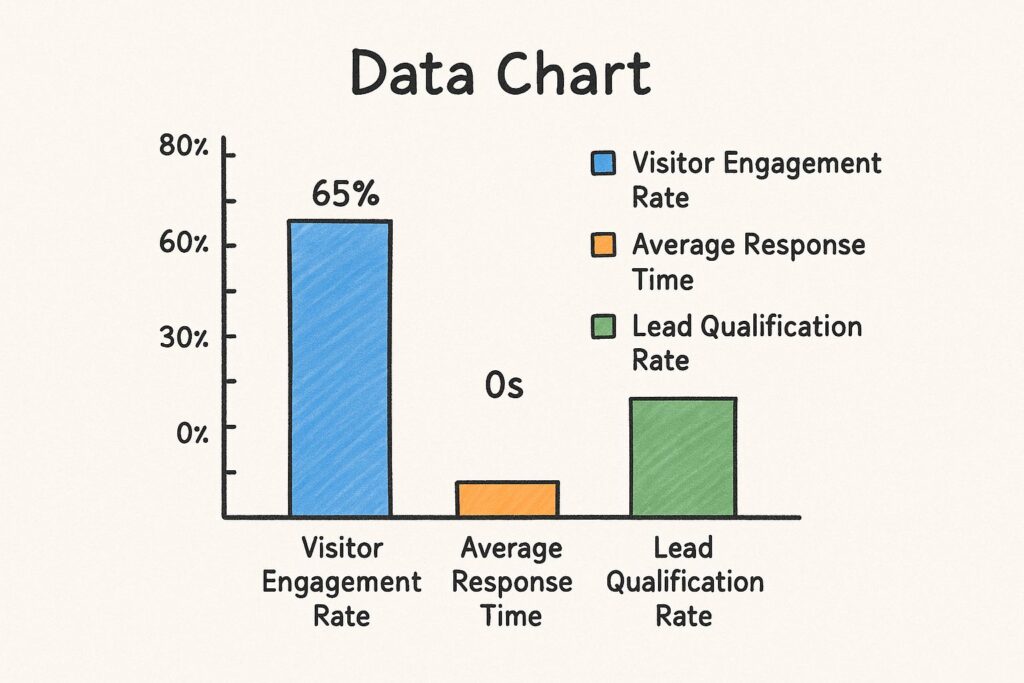
chatbot performance
The data tells a clear story. The chatbot’s advantage—zero wait time, high engagement, and solid qualification rates—is a powerful formula for growth. If you’re curious, you can discover a lot more about the many other chatbot benefits that go far beyond just lead generation.
When you ditch the old way of doing things, the contrast becomes crystal clear.
Chatbot Engagement vs Traditional Forms
The table below breaks down exactly why a conversational approach leaves static forms in the dust.
| Feature | Traditional Forms | Chatbot for Lead Generation |
|---|---|---|
| Response Time | Slow. Visitors wait hours or days for a follow-up. | Instant. Engages users immediately, 24/7. |
| User Experience | Passive and impersonal. Requires users to do all the work. | Interactive and engaging. Guides the user through a natural conversation. |
| Qualification | Minimal. Gathers basic info, leaving qualification for the sales team. | Automated. Asks targeted questions to pre-qualify leads in real-time. |
| Conversion Rates | Typically low, often under 2-3%. | Significantly higher, capturing more leads from the same amount of traffic. |
| Personalization | None. Every visitor sees the exact same fields. | Dynamic. Can tailor questions and responses based on user behavior. |
| Scheduling | Manual. Requires back-and-forth emails to book a meeting. | Integrated. Books meetings directly into a sales rep’s calendar. |
It’s not just a minor upgrade; it’s a completely different league. Chatbots meet customers where they are, giving them the instant gratification they expect.
Turning Traffic Into A Predictable Pipeline
The results of this conversational approach speak for themselves. Websites that bring in AI chatbots can see a massive jump in lead capture. In fact, these bots are capable of converting roughly 28% of website visitors into qualified leads—a huge lift compared to passive forms.
A chatbot acts as the ultimate bridge between your marketing efforts and your sales team. It ensures the money you spend driving traffic to your site isn’t wasted on missed opportunities or slow follow-ups.
By automating those critical first steps of the sales process, a chatbot makes sure no potential customer ever slips through the cracks. To see how this fits into the bigger picture, you can dive deeper into broader strategies for AI for Lead Generation and understand how they’re shaping the future of sales.
Ultimately, this proactive assistant turns your website from a simple online brochure into a consistent, reliable lead-generation machine.
The Real-World Business Impact of Chatbots
Let’s move past the theory. A well-built lead generation chatbot delivers real, measurable growth. This isn’t just hype; it’s about seeing a direct, positive effect on your bottom line. The impact boils down to four powerful pillars of value.
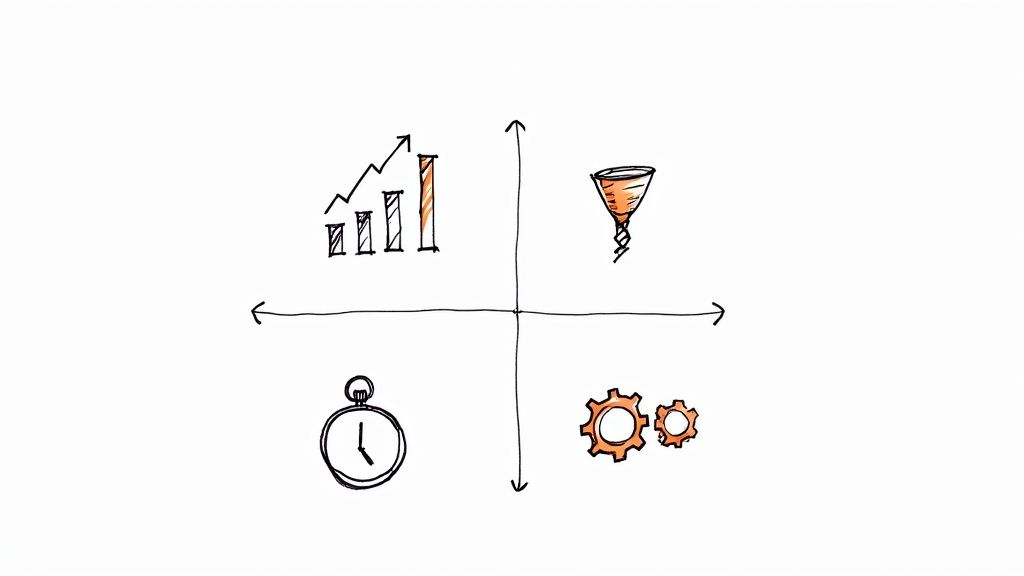
chatbot impacts
Each one of these pillars works together to forge a more efficient and effective sales process. You’re essentially turning your website from a passive brochure into an active, lead-generating machine. Let’s unpack exactly how that happens.
Instantly Increase Your Lead Volume
Your website traffic is packed with potential leads, but how many of them leave without a trace? A chatbot acts as your 24/7 digital greeter, proactively engaging visitors who might otherwise just browse and bounce. The moment they land on a key page, it can pop up to start a conversation, offer help, or provide a valuable resource.
This immediate, helpful interaction is far more effective than just hoping someone fills out a static form. By simply being available and starting the conversation, a lead gen chatbot can dramatically increase the number of leads you capture from the traffic you already have. You stop waiting for people to find your “Contact Us” page and start bringing the conversation right to them.
Dramatically Improve Lead Quality
More leads are great, but better leads are what actually drive revenue. One of the biggest impacts a chatbot can have is its ability to act as a first-line filter. It separates the serious buyers from the casual browsers by asking smart, qualifying questions right out of the gate.
A chatbot serves as an automated Sales Development Representative (SDR), asking crucial questions about budget, timeline, and specific needs before a lead ever reaches your sales team. This ensures every conversation your reps have is with someone who’s actually worth their time.
This pre-qualification process is a total game-changer. Your sales reps can stop wasting time on tire-kickers and focus their energy exclusively on prospects who have already expressed genuine interest and fit your ideal customer profile.
Accelerate the Entire Sales Cycle
Time kills deals. It’s a classic sales mantra for a reason. The longer you take to respond to a new inquiry, the lower your chances of closing it. In fact, just a five-minute delay can slash your odds of qualifying a lead by a staggering 80%. Chatbots solve this problem by making the delay disappear.
Here’s how they speed everything up:
- Real-Time Lead Routing: As soon as a chatbot qualifies a lead, it can instantly notify the right sales rep or even book a meeting directly on their calendar. No more waiting in a queue.
- Contextual Handoff: The full chat transcript gets passed along, so the sales rep knows exactly what the prospect wants before the call even begins.
- Immediate Gratification: The prospect gets their questions answered and their next steps confirmed in seconds, keeping their buying momentum high.
This instant handoff means your sales team connects with hotter, more informed leads faster than your competitors can. Want to see more data behind this? You can explore some of the most important key chatbot statistics that highlight their impact on business speed and efficiency.
Boost Your Operational Efficiency
Finally, automating the first few steps of lead engagement creates massive operational wins. Your highly skilled (and expensive) sales team shouldn’t be spending their days asking the same repetitive qualifying questions or scheduling discovery calls. Their real expertise is in building relationships and closing deals.
By letting a chatbot handle these top-of-funnel tasks, you free up your sales reps to focus on high-value activities that actually generate revenue. This not only makes your team more productive but also improves their job satisfaction. The result is a leaner, more effective sales operation where technology and human talent work in perfect harmony.
Designing a Chatbot That Actually Converts
A lead generation chatbot that actually works is built on psychology, not just code. It’s about creating an experience so helpful and natural that people want to talk to it. Forget those clunky, robotic scripts from the early days of bots; today’s best ones feel like a seamless extension of your brand, guiding visitors right to a solution.
Here’s the secret: stop thinking of it as a tool and start thinking of it as a personality. A truly effective bot mirrors your best salesperson—it’s friendly, sharp, and knows exactly what questions to ask to keep the conversation moving forward.
Crafting a Compelling Bot Personality
Before you write a single line of dialogue, you have to define your chatbot’s persona. Is it a witty and informal guide? Or a professional, straight-to-the-point expert? The right choice must mirror your brand’s voice and click with your target audience.
A B2B SaaS company might opt for a bot that’s all about efficiency and knowledge, cutting straight to the chase. In contrast, a direct-to-consumer brand could use a playful, emoji-filled personality to make the shopping experience feel fun and interactive. This isn’t just fluff; it’s a strategic decision that sets the tone for every interaction.
The goal is to create a personality that feels authentic to your brand. A consistent voice builds trust and makes users more comfortable sharing their information, which is the whole point of lead generation.
Once the personality is locked in, you can start scripting. The words you pick are critical. For a deeper look at this, you can learn more about the art of effective chatbot copywriting to make sure every message hits the mark.
Scripting Natural Conversational Flows
The difference between a good chatbot and a great one often comes down to its conversational flow. A bad flow feels like an interrogation, firing off one question after another. A great flow feels like a helpful, guided chat where each step logically follows the last.
Start by mapping out the ideal user journey. What’s the main goal? Is it to book a demo, download a guide, or get a price quote? Every question and response should gently steer the user toward that finish line.
Here are a few actionable tips for scripting better flows:
- Start with a Strong Opener: Ditch generic greetings like “How can I help you?” Instead, be specific and contextual. For a user on your pricing page, a better opener is: “Hi there! Looking for the right plan? I can help you find the perfect fit.”
- Use Quick-Reply Buttons: Give users pre-defined options (like “Book a Demo” or “Ask a Question”) so they can respond without typing. This cuts friction and keeps the conversation moving.
- Break Up Your Questions: Never ask for multiple pieces of information at once. Ask for their name, then their email, then their company—each in a separate message. It feels far more conversational and much less like a boring form.
Designing Smart Qualification Pathways
One of the most powerful jobs of a lead gen chatbot is to effectively qualify sales leads before they ever land in front of your team. This means designing a pathway that gathers the right info without scaring potential customers away. It’s a delicate balance.
To pull this off, structure your questions in a logical order. Start with low-commitment inquiries and slowly build toward the more specific details. This approach, often called progressive profiling, builds trust one step at a time.
Here’s what a practical qualification pathway might look like for a B2B service:
- Identify the Need: Start by figuring out their goal. “What brings you here today? Are you looking to improve your marketing, sales, or support?”
- Gather Context: Once you know what they’re after, ask a follow-up for more detail. “Great! What’s the biggest challenge you’re facing with marketing right now?”
- Qualify on Key Criteria: Now, ask a deal-breaker question to see if they’re a good fit. This could be company size: “Got it. Roughly how many employees are on your team?”
- Capture Contact Information: Only after you’ve provided value and confirmed they’re a potential fit should you ask for their email or phone number to schedule the next step.
By designing your chatbot with a clear personality, natural flows, and smart qualification pathways, you transform it from a simple widget into a powerful conversion engine.
Real-World Chatbots Winning at Lead Generation
Theory is great, but seeing a chatbot in action is where the real learning happens. When you break down how successful companies use them, you find a library of proven strategies you can adapt for your own business. It’s all about seeing what works and why.
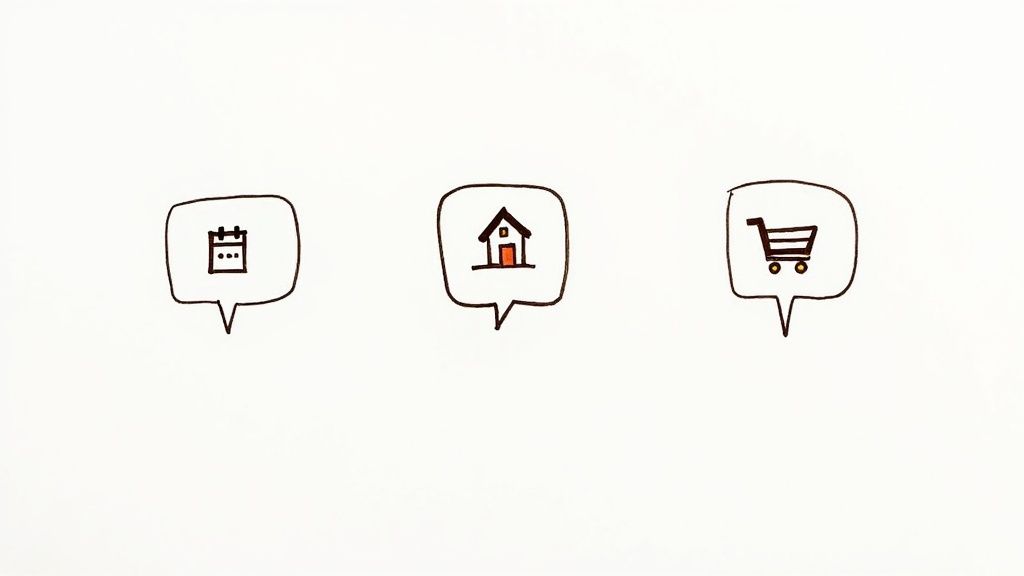
lead generation chatbots
These bots aren’t just glorified contact forms. They are sophisticated sales assistants, fine-tuned for specific industries and outcomes. Let’s dig into a few practical examples to see how they turn website traffic into qualified, actionable leads.
Example 1: The SaaS Demo-Booking Machine
For any B2B SaaS company, booking qualified demos is the lifeblood of the sales pipeline. A chatbot can become an absolute powerhouse here. Instead of a generic “Request a Demo” button that leads to a static form, a proactive chatbot starts the process instantly.
Use Case: A visitor lands on your pricing page. After a few seconds, the bot pops up: “Hi there! Exploring our plans? I can help you figure out the best fit for your team in about 30 seconds.”
This approach immediately offers value, not a sales pitch. The bot then asks a few key qualifying questions:
- Team Size: “To start, how many people are on your team?”
- Primary Goal: “What’s the main thing you’re hoping to achieve with our software?”
- Integration Needs: “Are there any specific tools you need us to connect with, like Salesforce or Slack?”
Based on the answers, the bot confirms they’re a good fit. Then comes the magic moment: “It looks like our Pro Plan would be perfect. A quick 15-minute demo is the best next step. I can book that for you right now—what day works best?” Just like that, it integrates with a sales rep’s calendar and the meeting is booked. No back-and-forth emails, no friction.
Example 2: The Real Estate Buyer Filter
The real estate game is all about matching the right people with the right properties. A chatbot on an agent’s website can automate this initial filtering process with incredible efficiency, saving agents hours of phone tag.
Use Case: A potential buyer lands on the site, and the bot greets them with, “Welcome! Looking for your dream home? Let’s narrow down the options.”
The conversation is designed to gather all the essential details a human agent would ask for on an initial call. It collects info about the buyer’s preferences, budget, and timeline in a friendly, no-pressure way.
By asking these questions upfront, the chatbot pre-qualifies visitors, ensuring the agent only spends time on calls with serious, motivated buyers who are ready to move forward.
Once the bot confirms the lead is qualified, it offers to schedule a call with an agent to discuss specific listings that match their criteria. The agent gets a full transcript and is ready for a highly productive conversation. This seamless handoff turns a casual browser into a high-potential client.
Example 3: The E-commerce Discount and Data Swap
For an e-commerce brand, growing an email or SMS list is a top priority for future marketing. A chatbot can turn this into a fun, interactive experience that feels like a win for the customer.
Use Case: A visitor browsing a product category might see a chatbot appear with an enticing offer: “Hey! Finding the perfect gift? Answer three quick questions and I’ll give you a 15% discount code for your first order.”
This is a classic value exchange. The bot asks simple, helpful questions to guide the shopping experience, like “Who are you shopping for?” or “What’s your budget?” After providing a tailored recommendation, it makes the final move: “Great choice! To get your 15% off coupon, just enter your email below.” The user gets an immediate reward, and the brand captures a valuable lead for its marketing funnel. It’s a simple, effective strategy that boosts both immediate sales and long-term customer relationships.
The widespread adoption of these automated solutions reflects massive market growth; one report projects the global chatbot market to hit $46.64 billion by 2029. You can explore more about these trends and chatbot statistics.
How to Get Your First Chatbot Live and Integrated
Ready to put your first lead generation chatbot to work? The good news is that getting started is more about strategy than hardcore technical skills. Modern platforms have made launching a bot pretty straightforward, allowing you to focus on what really matters: designing a helpful experience that sends qualified leads straight to your sales team.
The whole process boils down to a few key decisions and some simple, actionable steps. Let’s walk through exactly what you need to do to get your bot up, running, and plugged into the tools you already use.
Choosing the Right Chatbot Platform
First things first, you need to pick the right tool for the job. Not all chatbot builders are created equal, and your choice will directly impact how easy it is to build, manage, and scale your efforts down the road.
Don’t get hypnotized by endless feature lists. Instead, zero in on the three things that actually matter for lead generation.
- Ease of Use: Look for a no-code, drag-and-drop interface. Your marketing or sales team should be able to edit conversation flows without needing a developer. The goal is agility—you want to launch fast and make tweaks just as quickly.
- Integration Capabilities: Your chatbot can’t be an island. It absolutely must connect smoothly with your CRM (like HubSpot or Salesforce), email marketing software, and calendar tools. Native integrations are your best bet because they ensure data flows automatically without any hiccups.
- Scalability: Start simple, but choose a platform that can grow with you. Can it handle conversations on multiple channels like your website, Facebook Messenger, and Instagram? Does it have the power to support more advanced logic as your needs get more complex?
Building Your First Conversation Flow
Once you have your platform, it’s time to build. But before you drag a single block, define one primary goal for your bot. This is where most people go wrong—they try to make the bot do too much at once, which just leads to confusing conversations and lousy results.
Start with a single, high-value objective. Is the chatbot’s number one job to book a sales demo? Capture an email for your newsletter? Or pre-qualify visitors for a custom quote? Define this goal clearly, as it will guide every single question you script.
With a clear goal in mind, you can map out a simple, effective conversation. Think of it as a logical path with a clear beginning, middle, and end.
- The Opener: Greet the visitor with something contextual and helpful.
- The Qualification: Ask two or three essential questions to figure out if they’re a good fit.
- The Ask: Gently guide the user toward your main goal (e.g., “Would you like to book a time to chat?”).
- The Handoff: Grab their information and confirm what happens next so they aren’t left hanging.
Integrating Your Bot for a Seamless Handoff
This is where the magic happens. A chatbot that doesn’t pass lead data into your other systems is a huge missed opportunity. Integration is what turns a simple chat into a powerful automation machine.
When a chatbot is properly connected to your CRM, incredible things happen automatically. For example, when a visitor gives their email address, the integration can instantly:
- Create a new contact in your CRM.
- Assign the lead to the right salesperson based on territory or company size.
- Log the entire chat transcript to the contact’s record, giving the sales rep full context for their follow-up.
- Trigger a welcome email sequence from your marketing platform.
This level of automation ensures that hot, qualified leads are acted on in real-time. There’s no manual data entry, no risk of leads falling through the cracks, and no delay in following up. It’s the final, crucial step to making your chatbot for lead generation a true growth engine for your business.
Measuring Your Chatbot’s Performance and ROI
So, you’ve launched a chatbot. Great. But you can’t improve what you don’t track. Focusing on the right numbers is how you turn a simple website widget into a legitimate revenue engine. This means looking past simple vanity metrics like the total number of conversations and digging into the KPIs that directly tie back to sales pipeline growth.
Core Metrics for Your Performance Dashboard
To get a clear picture of your chatbot’s health, you need a simple dashboard that tracks a handful of essential metrics. These KPIs tell the full story, from the moment a visitor engages all the way to a qualified lead landing in your sales team’s hands. Think of it as a funnel—each metric shows you exactly where people are dropping off.
Here are the non-negotiable metrics to track:
- Conversation Rate: The percentage of your total website visitors who actually start a chat. If this is low, your welcome message isn’t grabbing their attention.
- Lead Capture Rate: Out of all conversations started, what percentage result in the bot successfully getting an email or phone number? This is a direct measure of how well your bot turns a casual chat into an actionable lead.
- Lead Qualification Rate: Arguably the most critical metric. It tracks the percentage of leads captured that meet your specific criteria (think company size, budget, or need). A high qualification rate means your bot is filtering out the noise and sending only the best prospects to your team.
When you track these three metrics together, you get a powerful, at-a-glance view of how your chatbot is performing. You can instantly see if you have an engagement problem, a conversion problem, or a qualification problem.
Connecting Chatbot Activity to Sales Outcomes
While the metrics above are fantastic for optimizing the bot itself, the end goal is always revenue. To calculate the true return on investment (ROI), you have to connect your chatbot’s activity directly to real sales outcomes. This is where a tight integration with your CRM becomes non-negotiable.
Once you can see which sales opportunities started with the chatbot, you can start tracking the metrics that really matter to the business.
Metrics That Prove Your Bot’s Sales Impact:
- Meetings Booked: This is as direct as it gets. How many qualified meetings did the chatbot book on your sales team’s calendars this month? It’s one of the clearest signs of a successful chatbot for lead generation.
- Pipeline Influenced: This metric shows the total dollar value of all sales opportunities that were created or touched by a chatbot interaction. It’s the number that shows executives exactly how much potential revenue the bot is adding to the pipeline.
- Cost Per Qualified Lead: To figure this out, just divide your total investment in the chatbot (platform fees, setup, etc.) by the number of qualified leads it generated. This helps you benchmark its efficiency against other channels like paid ads or content syndication.
Tracking these numbers gives you the hard data you need to prove your chatbot’s value and justify where to invest more time and resources.
Frequently Asked Questions
Even with all the benefits, jumping into new tech always brings up a few questions. Let’s tackle the most common ones about using chatbots for lead generation so you can move forward with confidence.
Ready to turn your website traffic into a predictable stream of qualified leads? Clepher gives you an intuitive, no-code platform to build powerful AI chatbots that engage visitors, qualify prospects, and sync seamlessly with the tools you already use. Start your free trial of Clepher today and see how easy it is to automate your growth.
Related Posts

